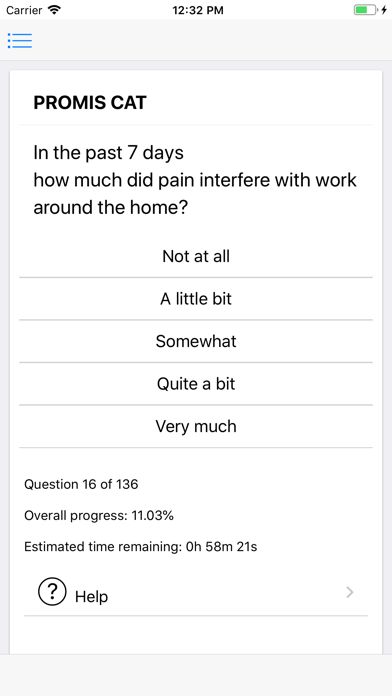
The best treatment for one patient may be different from the one that works best on average. Guidelines and conventional decision aids provide average treatment effects and suggestions based on the average patient. However, each patient has unique characteristics that may affect benefits and risks. Back Pain Tracker is an interactive app that helps personalize treatment.
Back pain is a major and growing source of pain and disability. The Institute of Medicine included “Comparing the effectiveness of treatment strategies for low back pain without neurological deficit or spinal deformity” in the top quartile of 100 research priorities in 2009. In U.S. national surveys, LBP is the most frequent type of pain, reported by about half of adults in the past year. It accounts for 34 million office visits annually to primary care physicians. An estimated 7 million adults have activity limitations due to low back pain. It is considered one of the most vexing health problems of our time. Back pain most commonly occurs without leg numbness or weakness and cannot be reliably attributed to a specific cause (“non-specific back pain”). The optimal strategy for treating such patients is uncertain. The efficacy of treatments is moderate at best. A significant proportion develop persistent disabling pain despite use of first-line therapies such as analgesics, exercise therapy, or cognitive behavioral therapy. Invasive treatments and surgery have limited efficacy and significant risks. Our goal is to help each patient with back pain choose the treatment that is right for them, and engage patients for long term self-assessment using Patient Reported Outcomes (PRO)scores, potentially for more than 5 years, when many patients start reporting deterioration in pain and function following back surgery. BPT has the potential to help improve outcomes for patients with back pain.
BPT as an interactive technology to help patients with personalized Shared Decision Making (SDM) in conjunction with their healthcare providers on the appropriateness of the wide range of treatments available for back pain. Too frequently patients are unable to match their treatment decisions with their preferences because they do not fully understand the risks and benefits of the different options. Patients frequently hold mistaken beliefs about their diagnosis and risks/benefits associated with treatments. BPT helps align an individual patient’s values and preferences with the patient’s treatment choice through SDM. Unique features of great significance in the BPT are: (1) providing patients with information that balances risks and benefits of treatment options, (2) eliciting preferences based on realistic goals of care, and (3) integrating PROs in the decision-making process at the point-of-care.
The application was developed through a user-centered design approach. The interface is designed for ease of use by patients in entering PRO data. The report presents time-trended PRO scores that are understandable for patients, including personalized estimates of normative outcomes based on patients’ age, sex and other features. Integration of PROs in the decision-making process at the point-of-care and helping patients directly understand and use benchmarked PRO scores are important novel aspects of our approach. PROs developed by the NIH Task Force on Research Standards for Chronic Low Back Pain and the NIH Patient Reported Outcomes Measurement Information System Computer Adaptive Tests (PROMIS CATs) interact with and “feed” the SDM process. In particular, the integration of individual patient factors adds to the risk/benefit discussion in the decision for surgery. The scientific premise for BPT is supported by strong clinical evidence and preliminary works. This type of system has been shown to improve patient knowledge and engage the patient for more personalized care. SDM can reduce rates of discretionary surgery and improve patient satisfaction.



